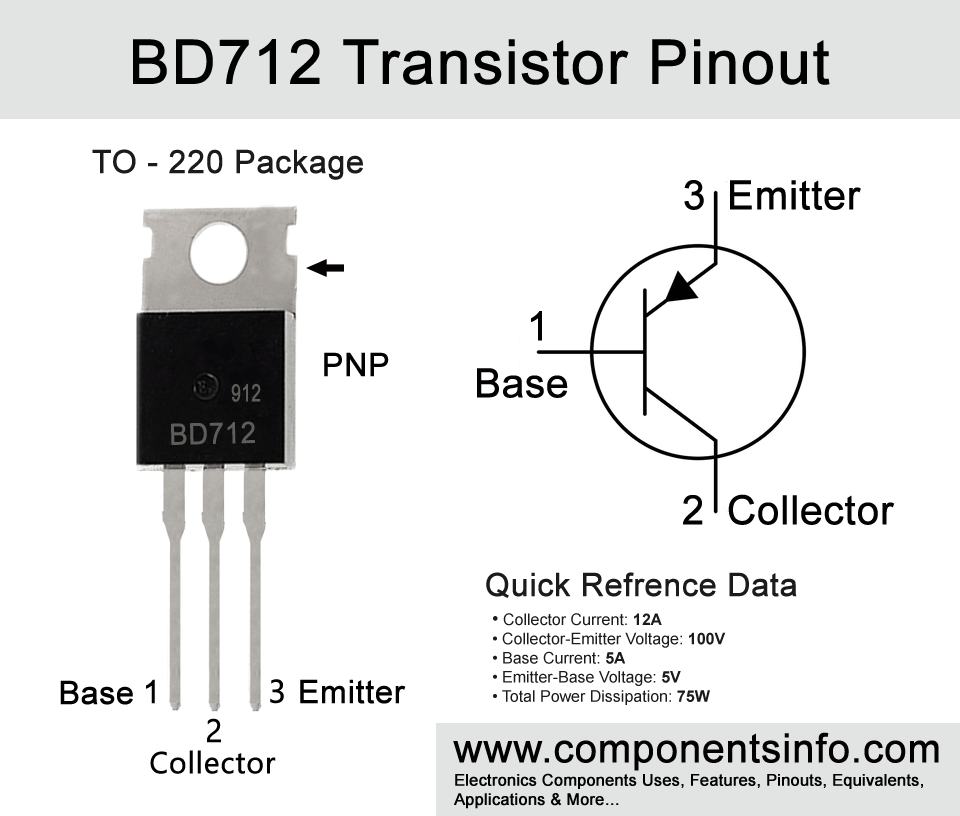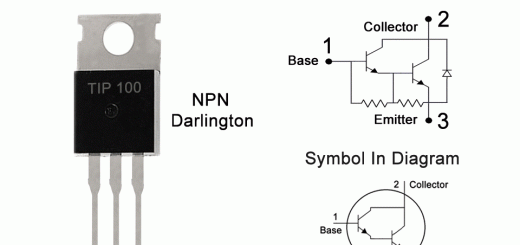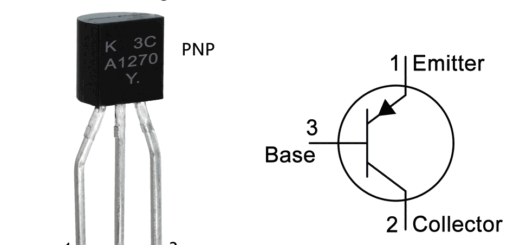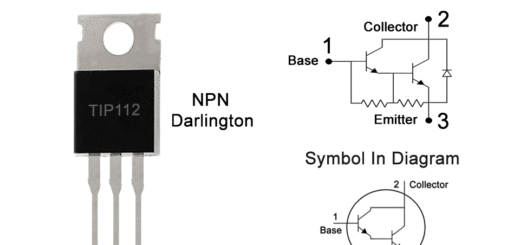BD712 Transistor Pinout, Equivalent, Features, Applications and Details
In this post we will understand BD712 transistor pinout, equivalent, features, applications and details about this transistor such as where and how to use it.
Absolute Maximum Ratings:
- Package Type: TO-220
- Transistor Type: NPN
- Max Collector Current(IC): 12A
- Max Collector-Emitter Voltage (VCEO): 100V
- Max Emitter-Base Voltage (VEBO): 5V
- Max Base Current (IB): 5A
- Max Collector Power Dissipation (Pc): 75W
- Minimum & Maximum DC Current Gain (hFE): 15 to 150
- Max Storage & Operating temperature Should Be: -65°C to 150°C
NPN Complementary:
NPN Complementary of BD712 is BD711
Replacement and Equivalent:
BDW47G, BDW47G, BDT88, NTE2344 ECG332
Low voltage equivalents: BD706, BD708, BD710
BD712 Transistor Explained / Description:
BD712 is a PNP power transistor available in TO-220 transistor package. It is a transistor of BD71x series which also contains other transistors such as BD706, BD708 and BD710.
Understanding the pin layout of the transistor the first pin is Base, second pin is Collector and the third pin is Emitter.
There are also complimentary series of these transistors which contain BD705, BD707, BD709 and BD711.
The absolute maximum ratings of the transistor are as follows: The collector current of the transistor is upto 8A, collector-emitter voltage is 100V, base current is 1A, emitter-bae voltage is 5V, collector power dissipation is 75W, storage temperature is -65°C to 150°C and junction temperature is 150°C.
The device is designed to be used in switching and power linear applications which makes it usable in A wide variety of these type applications.
Where We Can Use it & How to Use:
The transistor is intended for use in switching and power applications such as controller, load driving, inverter, regulator etc. The transistor has very good collector to emitter voltage limit and also good collector current capabilities due to which it can be used in vareity of applications. A detailed list of its applications can be found below.
Here is a short guide on how to use the transistor:
Applying power to the base pin also we can say it controller pin because it controls the output of the transistor. So if we want desired output we have to apply the required current at its base to get that desired output. As the base current increases the output will also increase.
Connecting emitter pin with the positive connection of the load and the negative contact of the load will be connected with the negative supply of the circuit.
The emitter pin will be connected directly with the positive supply of the circuit.
Applications:
Voltage regulators
Audio Amplifiers
Motor Driver Circuits
Lighting Control Circuits
DC-DC Converters
Power Supplies
Battery Charger Circuits
Safe Operating Guidelines:
Here are the safe operating guidelines of the transistor.
- Always use the transistor 20% below from its absolute maximum ratings.
- So the maximum collector current of 12A but we will not use more than 9.6A.
- The maximum collector-emitter voltage 100V so we will not use more than 80V.
- A suitable heatsink should be used with the transistor.
- The transistor’s storage and operating temperature should always be between -65°C to 150°C.
Datasheet:
To download the datasheet just copy and paste the below link in your browser.
https://pdf1.alldatasheet.com/datasheet-pdf/view/619473/NJSEMI/BD712.html



